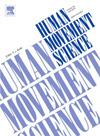Countermovement jump analysis: Effects of acoustic and visual stimuli on jump performance in volleyball players evaluated by inertial measurement unit
IF 1.9
3区 心理学
Q4 NEUROSCIENCES
引用次数: 0
Abstract
The ability to perform maximal vertical jumps (VJs) significantly affects athletic performance in several sports, such as volleyball, with a paucity of studies investigating the effects of different sensory stimuli on VJ performance. To the best of our knowledge, no study quantitatively assessed the variations of spatial-temporal and kinetic parameters during Countermovement Jump-Free Arms (CMJ-FA) execution in different acoustic and visual conditions.
The aim of the present study is to explore the effects of visual and acoustic stimuli, in conditions considered incentive and disincentive, on CMJ-FA performance via an Inertial Measurements Unit (IMU). Twenty male volleyball athletes were assessed across five sessions, each with 3 CMJ-FA repetitions, performed either without sensory stimulus (NS), with incentive (IAS) and disincentive (DAS) acoustic stimulus, and with incentive (IVS) and disincentive (DVS) visual stimulus. Spatial-temporal and four kinetic parameters were evaluated. Significant differences in disincentive conditions with respect to NS in time of flight phase and jump height were observed. Moreover, in DVS a trend of increase for Impact Index compared to NS was found. Instead, no significant variations were found in incentive conditions compared to NS. These findings highlighted the interference of disincentive conditions on jump performance; moreover, an increase of ground impact force during landing phase in DVS may predispose to muscle-skeletal lower limb injuries. These knowledges could be useful to the sports trainers for improving athletes' control, in order to desensitize them from disincentive conditions, keeping a good performance and decreasing the risk of injuries during the competition.
反向起跳分析:用惯性测量装置评价声视刺激对排球运动员起跳性能的影响
进行最大垂直跳(VJs)的能力显著影响排球等几种运动的运动表现,但很少有研究调查不同感官刺激对VJ表现的影响。据我们所知,目前还没有研究定量评估在不同声光条件下反动作无跳臂(CMJ-FA)执行过程中时空和动力学参数的变化。本研究的目的是通过惯性测量单元(IMU)探索视觉和听觉刺激在考虑激励和非激励条件下对CMJ-FA性能的影响。20名男子排球运动员分5个阶段进行评估,每个阶段进行3次CMJ-FA重复,在没有感觉刺激(NS)、有激励(IAS)和抑制(DAS)声刺激、有激励(IVS)和抑制(DVS)视觉刺激的情况下进行。对时空和四个动力学参数进行了评价。在飞行阶段时间和跳跃高度方面,NS的抑制条件存在显著差异。此外,与NS相比,DVS的影响指数有上升趋势。相反,与NS相比,在激励条件上没有发现显著的变化。这些发现强调了抑制条件对跳远成绩的干扰;此外,在落地阶段地面冲击力的增加可能导致下肢肌肉-骨骼损伤。这些知识可以帮助运动训练人员提高运动员的控制能力,使运动员在比赛中不受不利条件的影响,保持良好的表现,降低受伤的风险。
本文章由计算机程序翻译,如有差异,请以英文原文为准。
求助全文
约1分钟内获得全文
求助全文
来源期刊

Human Movement Science
医学-神经科学
CiteScore
3.80
自引率
4.80%
发文量
89
审稿时长
42 days
期刊介绍:
Human Movement Science provides a medium for publishing disciplinary and multidisciplinary studies on human movement. It brings together psychological, biomechanical and neurophysiological research on the control, organization and learning of human movement, including the perceptual support of movement. The overarching goal of the journal is to publish articles that help advance theoretical understanding of the control and organization of human movement, as well as changes therein as a function of development, learning and rehabilitation. The nature of the research reported may vary from fundamental theoretical or empirical studies to more applied studies in the fields of, for example, sport, dance and rehabilitation with the proviso that all studies have a distinct theoretical bearing. Also, reviews and meta-studies advancing the understanding of human movement are welcome.
These aims and scope imply that purely descriptive studies are not acceptable, while methodological articles are only acceptable if the methodology in question opens up new vistas in understanding the control and organization of human movement. The same holds for articles on exercise physiology, which in general are not supported, unless they speak to the control and organization of human movement. In general, it is required that the theoretical message of articles published in Human Movement Science is, to a certain extent, innovative and not dismissible as just "more of the same."
 求助内容:
求助内容: 应助结果提醒方式:
应助结果提醒方式:


